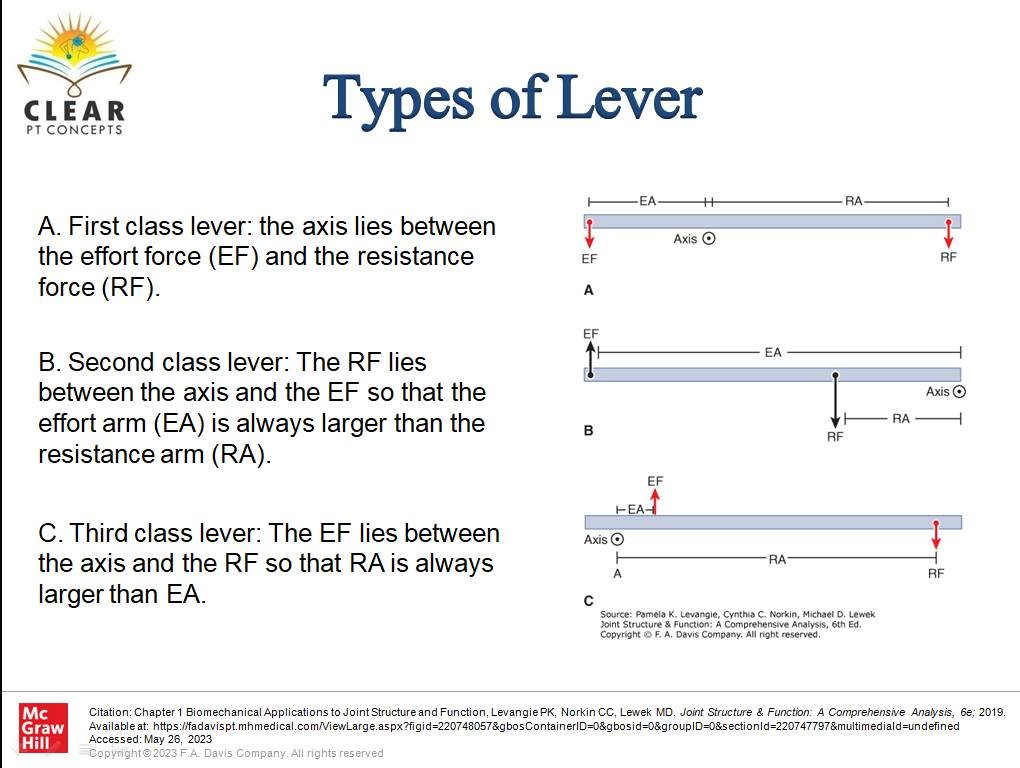Types of Lever

Categories
Tags
- anatomy
- Cardiovascular
- clearptconcepts
- dpt
- dptstudent
- fsbpt
- medicalstudents
- neuro
- neuroanatomy
- neurophysiotherapy
- NPTE
- NPTEP
- NPTEPrep
- npteprepcourse
- physicaltherapist
- physicaltherapistassistant
- physicaltherapy
- PhysicalTherapyFuture
- physicaltherapystudent
- physiotherapist
- physiotherapiststudent
- physiotherapy
- physiotherapystudents
- pt
- pta
- ptstudent
- StudyGroup
In a lever system, the force that is producing the resultant torque (the force acting in the direction of rotation) is called the effort force (EF). Because the other force must be creating an opposing torque, it is known as the resistance force (RF).
Another way to think of effort and resistance forces acting on a lever is that the effort force is always the winner in the torque game, and the resistance force is always the loser in producing rotation of the segment.
The moment arm for the effort force is referred to as the effort arm (EA), whereas the moment arm for the resistance force is referred to as the resistance arm (RA).
A. First class lever: the axis lies between the effort force (EF) and the resistance force (RF).
B. Second class lever: The RF lies between the axis and the EF so that the effort arm (EA) is always larger than the resistance arm (RA).
C. Third class lever: The EF lies between the axis and the RF so that RA is always larger than EA.
Ref:Joint Structure & Function: A Comprehensive Analysis, 6e Pamela K. Levangie, Cynthia C. Norkin, Michael D. Lewek



